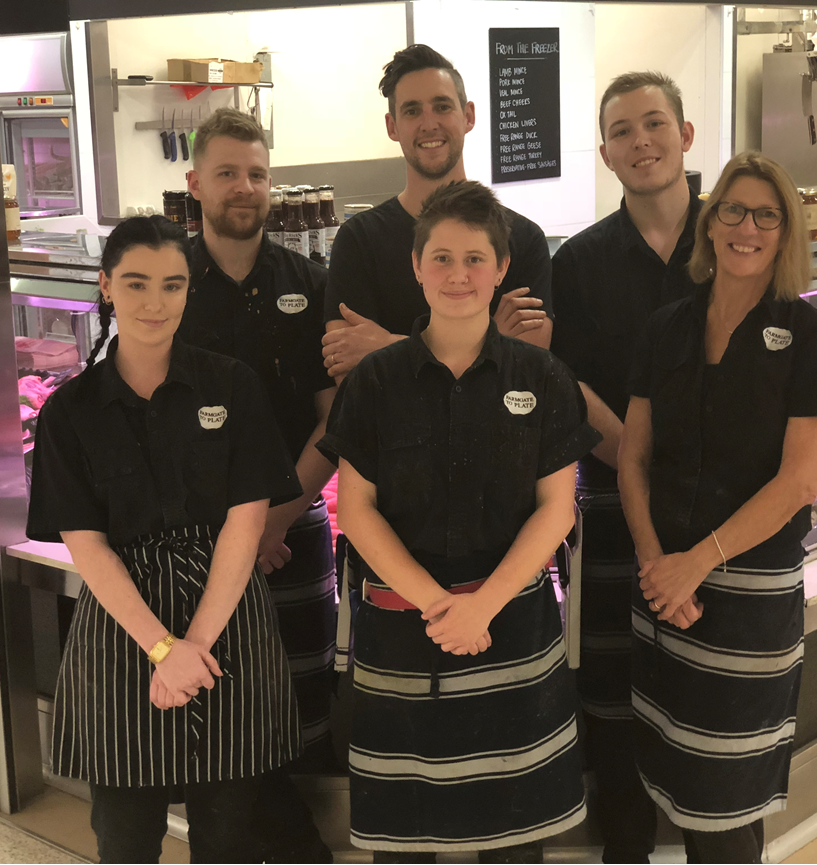Gender diversity in the beef industry

Theme: People & the Community
Priority: Diversity in the workforce
Butcher: Sarah Wadland
Location: Sydney, NSW
"At first my family hated the idea of it because they know how hard the industry is. At the start [they] would tell me that this isn't a woman's job, that it's only for men."
KEY POINTS
- Sydney apprentice butcher Sarah Wadland is a fourth-generation butcher, but the first female butcher in her family
- The beef industry is a typically male-dominated career path
- Ms Wadland has defied stereotypes and discrimination to secure her place in the beef industry
Women represent a small minority of beef industry workers, and 18-year-old Sarah Wadland counts herself among them. Ms Wadland left school during Year 12 to pursue an apprenticeship with butcher Farmgate to Plate in the Sydney suburb of Miranda, Sydney, and is on track to achieve her dream of becoming a butcher.
Ms Wadland comes from a line of butchers, abattoir operators, boning room workers and beef farmers that spans more than a century, but she’s the first female member of her family to opt for a career in this traditionally male-dominated field.
“I come from a meat industry family and I’m a fourth-generation butcher. This sort of work really interests me, and it’s also lots of fun. I grew up going to sale yards and farms with my Nonna and Grandpa, so I’ve always been around it,” Ms Wadland explained.
Ms Wadland got a taste for a career in preparing meat when she worked as a cashier in her grandfather’s shop, but when she told her family she wanted to leave school early to follow the same career path as her father, and his father before that, she was met with reservations and her grandfather even refused to train her.
“At first my family hated the idea of it because they know how hard the industry is. At the start [they] would tell me that this isn’t a woman’s job, that it’s only for men.”
Within the industry, Ms Wadland has also met with discrimination from former colleagues and employers.
“An old manager of mine also told me that females won’t be able to keep up with the men and that I wouldn’t be strong enough for the industry,” she said.
While working in a typically male-dominated workplace has been an adjustment, Ms Wadland is optimistic about her career and doesn’t believe her gender will hold her back from achieving her professional goals.
“It’s pretty male-orientated, but it’s a friendly environment with lots of laughs and jokes throughout the day. The biggest challenges for me have been building my confidence up and learning to work in an all-male environment, as well as lifting all the carcasses and other heavy things. Going forward though I think the biggest challenges will be working my way up to having my own shop, especially in this day and age where supermarkets are taking over everything.”
Ms Wadland is a proud advocate for equal professional opportunities within the beef industry, in line with the ABSF imperative to promote diversity in the beef workforce.
The Framework promotes the well-documented benefits of gender, age and cultural diversity, but women are still seriously underrepresented in the beef industry across all levels. Women comprise just 25.9% of participants, with 74.1% male representation, according to 2016 Gender Equality Agency data. This divide is even more pronounced among butchers and smallgoods makers, where in 2016, Australian Bureau of Statistics (ABS) found that just 6% of workers are women.
“It’s important that women are represented in male-dominated fields, because it proves that women can do anything if they put their mind to it. Hopefully if other women hear my story and many other stories about females making their way into male-dominated industries then it will encourage and empower women to do what they want in like and to believe in themselves,” Ms Wadland said.
Categories: People & the community